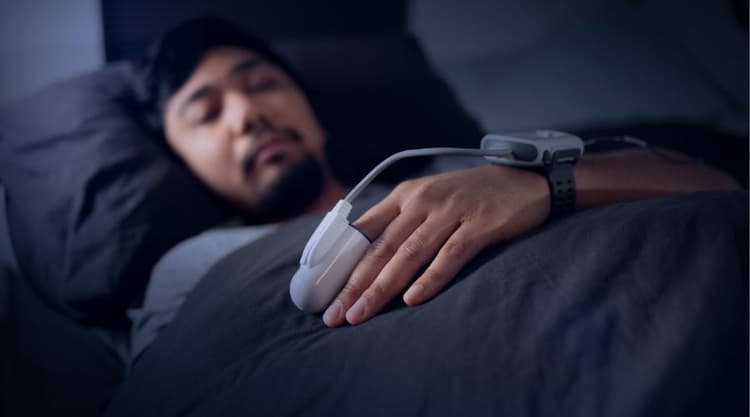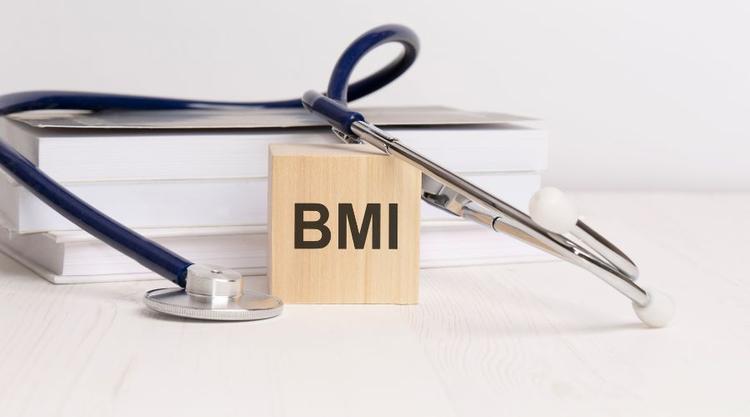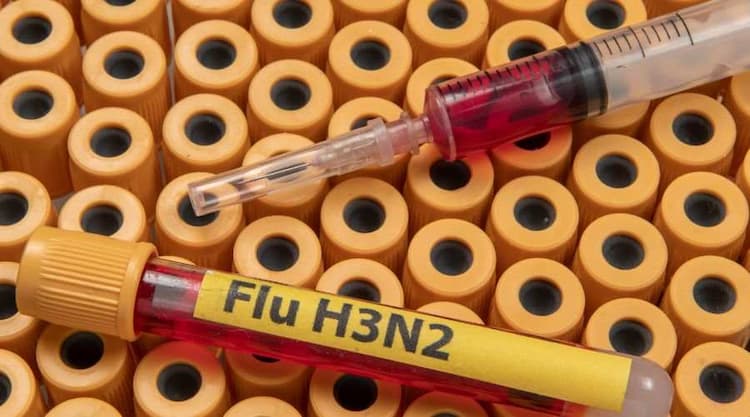7 ways to prevent seasonal depression

Medically Reviewed By
Dr. Ragiinii Sharma
Written By Srujana Mohanty
on Jan 11, 2023
Last Edit Made By Srujana Mohanty
on Mar 18, 2024

Seasonal affective disorder - a serious issue
Seasonal affective disorder, also called SAD, is a depression that a person experiences only at a specific time of year. This type of depression is because of the brain’s response to seasonal changes in the duration of daylight or sunlight. When the daylight hours move, the depression lifts itself. It is a mental health condition that is triggered by seasonal change. It is a part of major depressive disorder and bipolar disorder. Major depressive disorder is a condition of prolonged sadness and a lack of interest in general. On the other hand, bipolar disorder is a condition that occurs due to similar depressive episodes alternating with periods of abnormally high energy and activity. Some people may experience a mild version of SAD, also called winter blues, and feel a little down during winter. Still, SAD comes in another category as, unlike winter blues, its symptoms affect a person’s daily life, including their mental health. Only treatment can help you with it and help you to get through this time. The condition is associated with a biochemical imbalance in the brain because of less sunlight in winter. As seasons change from summer to winter, the brain's biological internal clock can cause seasonal affective depression.
Seasonal affective disorder symptoms
The affective disorder is a kind of mental health condition triggered by changing seasons from summer to winter. If a person experiences prolonged sadness and lack of interest in activities, then never ignore these signs; people with seasonal affective disorders are signs of major affective disorder, also known as bipolar disorder, only in specific months. There are mainly two types of seasonal affective disorders.
- Fall-onset - also known as winter depression, and its Symptoms begin in the late fall to early winter months and ease during the summer months.
- Spring-onset - also called summer depression- symptoms start in late spring to early summer and are rare and less common.
The signs and symptoms that occur during the winter season is a major depressive disorder in which a person can have mood swings symptoms of depression comprising:
- Feeling depressed or sad most of the day,
- Anxiety
- Feelings of hopelessness,
- Trouble concentrating,
- Extreme fatigue,
- Feeling Heavy irritation feeling in arms and legs
- Loss of interest in pleasurable activities
- Thought of suicide or death
- Feeling of guilt
- Decrease sex drive
- Increased appetite
Summer affective disorder - the difference
The seasonal affective disorder is depression in winter, but in some cases feel, depression in summer can cause long hours of sunlight to be a trigger. Many experts explain that the reason behind this can be the overproduction of melatonin, a hormone that responds to darkness and controls the sleep-wake cycle. Longer summer days lead to lower melatonin levels, and people with seasonal affective disorder signs may experience insomnia and sleep problems because they do not have enough melatonin. The longer daylight hours, shorter nights, and increased temperatures can lead to sleep disruptions. And people may not sleep, which is needed for optimal mood and health. Both for those affected by winter SAD and summer SAD. It is estimated that symptoms of the seasonal affective disorder are present in about 40 percent of the year.
Seasonal affective disorder is a kind of depression that is triggered during a season (mostly winters) and goes back with the season, also known as SAD, or more commonly as winter depression. However, some people suffering from SAD may have symptoms during the summer and feel better during the winter. You must consider seeing the best doctor if you think you might have SAD and are trying to cope with it. If you regularly feel depressed and feel sleeping problems during certain seasons, especially the winter, you may be experiencing SAD. Never ignore the symptoms of the affected disorder, like sadness, lack of energy, oversleeping, and weight gain; then it is best to consult the expert who will help you to manage and treat SAD with antidepressants, talk therapy, and light therapy. It is important that you consider visiting an expert and trained doctor if you think you might have SAD and you're struggling to cope. He will assess your mental health and confirm if you experience any seasonal changes in your thoughts and behavior.
In some cases, seasonal affective disorder does not recur every year. About 30 to 50 percent do not even show symptoms of the disorder in consecutive winters. In about 40 percent with SAD, depressive episodes continue after winter. They do not alleviate in the summer months, which leads to a change in diagnosis to either major depressive disorder or bipolar disorder. Specific symptoms of summer SAD are;
- Trouble sleeping
- Poor appetite or weight loss
- Restlessness or agitation
- Anxiety
- violent behavior
Causes of seasonal affective disorder
Seasonal affective disorder causes are complex as a shortage of sunlight contributes to the development. The lack of exposure to sunlight contributes to depression in winter, and too much sunlight contributes to seasonal depression in summer.
People who experience these symptoms and are affected seem to have disrupted daily rhythms like the sleep-wake cycle and cannot alter their sleep-wake cycle, which leads to changes in mood, sleep, and behavior. Many studies have also identified variants in genes linked with the development of seasonal affective disorder. However, nobody knows the exact causes of SAD. However, lack of sunlight or excess sunlight can trigger the condition if you are more prone. Some causes are
- Biological clock change
It is the most common cause of depression in winter, as when there is less sunlight, a person’s biological clock shifts, which regulates his mood, sleep, and hormones. As it shifts your daily schedule, your body cannot easily adjust to changes and starts showing symptoms.
- Chemical imbalance
It is another reason that can cause the condition as brain chemicals like neurotransmitters, including serotonin, contributes to feelings of happiness. If you are prone to SAD, you will have less serotonin activity. Because sunlight regulates serotonin, a lack of it can worsen the situation and lead to depression.
- Vitamin D deficiency
is another cause of people experiencing affective disorder; it happens as serotonin levels get a boost from Vitamin D and less sunlight leads to its deficiency, which affects mood.
- Melatonin boost
A chemical in a person’s body that regulates sleep patterns and mood. Lack of sunlight in winter may stimulate the overproduction of melatonin in people, and they feel sluggish and sleepy.
- Abnormal regulation of circadian rhythms
It also likely contributes to a person’s inability to match their circadian rhythms with changes in seasons, which leads to changes in sleep, mood, and behavior with a change in daylight hours.
Diagnosing and testing of seasonal affective disorder
SAD is common in people with major depressive disorder or else bipolar disorder; additionally, people with SAD have other mental disorders, like attention-deficit or hyperactivity disorder, an anxiety disorder, an eating disorder, or panic disorder. Also, SAD sometimes runs in families and is common in people who have relatives with other mental illnesses. Seasonal affective depression can be difficult to diagnose as there are many other types of depression with similar symptoms. If you notice any of the signs of seasonal depression listed above, then never try to diagnose yourself. Consult your doctor immediately, as they may refer you to the best psychologist, and they will ask about the symptoms that you experience. They will consider the pattern and decide on your problem and confirm it. It may take time before your healthcare provider realizes that your symptoms are forming in a pattern. The SAD diagnosis can be confirmed when
Your depression occurs in a similar pattern for at least two years.
Your period of depression is followed by periods that are without SAD signs.
Suppose you have symptoms of major depression. The expert will recommend no blood or scan test to diagnose SAD. However, they can recommend thyroid tests to ensure that it is functioning properly.
Treatment of the seasonal affective disorder
There are many treatments available, including CBT I,e cognitive behavioral therapy, antidepressants, and light therapy. The winter depression and summer depression treatments often differ and include the below-listed combinations:
- Spending time outside or near the window can relieve seasonal depression symptoms.
- Light therapy is done, and if increasing sunlight is not possible, then exposure to a special light for a specific time limit every day can help.
- Psychotherapy, also known as interpersonal therapy, can help change people's views of themselves. It can also help to improve interpersonal relationship skills.
- Prescribed antidepressants can also help correct the brain's chemical imbalance, which is one of the causes of SAD.
7 effective ways to prevent seasonal depression
Long, dark winter days have a depressing effect on some, and they mistake it as winter blues. It is best to get yourself checked as it can be a more common and severe condition known as a seasonal affective disorder or SAD. It is a form of depression in winter due to the less natural sunlight. Sunlight is vital for the body and regulates many things like moods, internal clocks, eating patterns, and sleeping patterns. When there is a drop in sunlight, there is a drop in hormones in the brain, which causes depression in some people. There are many ways to prevent yourself from this affective disorder:
- Talk to your doctor immediately.
SAD is a form of mental condition and depression that needs proper diagnosis and treatment. It is best to discuss signs of seasonal affective disorders with your doctor to confirm your problem and to start with the treatment if needed. Your doctor will help you by discussing all the necessary details about the type of depression you have. They will also help you to prevent the condition. Also, keep in mind that SAD is very common and usually goes away after the winter season. However, if you cannot handle or manage your symptoms or notice a major decline in your mental health, it is better to talk to your doctor.
- Seek for natural light or light boxes
The main cause of the affective disorder is the lack of sunlight, and that is why light therapy is done to treat SAD symptoms. Many light boxes are available in the market. Check out that these light boxes generate about 100 times stronger light than a normal lightbulb and have a blue or white light and not yellow light. Before buying, check that the light box is made especially for SAD, depression, and mood disorders. There are many light boxes also made for skin conditions. It is best to seek natural daylight as it offers many benefits. Soaking yourself in the sunshine can help you to deal with the condition.
- Get prepared in advance.
As you prepare your homes for the upcoming season change, you should also prepare your mind for this change to prevent yourself from SAD. It is best to give time to yourself by indulging in mood-boosting activities that can help people physically and psychologically and try to make them healthier. It is the best way to prevent yourself from seasonal affective disorder symptoms in advance, so set yourself up by starting in the fall season, doing enjoyable activities, initiating friends group chats and outings, choosing fun hobbies, etc.
- Eat well and keep a check on carbs.
According to many researchers, people more prone to affective disorder eat more carbs-rich foods, especially sweets and starchy foods. They overeat during the seasonal depression, which is to be checked to prevent the condition. People should focus on staying more energetic and avoid carbs-rich foods. Winter months have less sunlight, and the body has a Vitamin D deficiency. It is best to fulfill your Vitamin D intake with dietary supplements or foods that can be included in your daily meal plan. Eating fruits and veggies will help boost your happiness and improve human health.
- Stay active
Healthcare providers recommend people stay active to prevent SAD signs which are fatigue and lethargy. People more prone to SAD have to boost their energy levels and improve their mood by exercising. It will help you improve the circadian rhythm that assists in regulating sleep, eating patterns, and activity patterns. Try to do light exercise, as studies show that a leisurely walk outdoors helps to improve your mood and well-being.
- Be Social
The best way to prevent seasonal depression is to do enjoyable activities like participating in writing groups or book clubs. Try to be social, as there is a relationship between social interaction and depression. Find creative ways to stay connected with people, especially your loved ones. You can also play indoor games or talk to family members or friends on a zoom call.
- Try Aromatherapy
Aromatherapy is the therapy done by using essential oils for therapeutic purposes. It is the best way to prevent SAD symptoms. Essential oils help to lessen depression, as per many studies, along with other psychological issues like sleep problems and anxiety as well. Essential oils are significant in trends of SAD in particular as they influence the area of the brain responsible for controlling moods and the body's internal clock. It is one of the simple and safe methods to improve mental health.
FAQs
- Who is more at risk of developing SAD symptoms?
You are at increased risk of SAD if you are female, living far from the equator, have a family history, and have depression or bipolar disorder.
- How does SAD affect students?
Students can be affected by SAD as it can make them feel hopeless, discouraged, or worthless. At times they may feel crying more easily. Also, it can make them more self-critical or more sensitive to criticism.
- Does SAD affect small children?
Signs of SAD generally develop in adulthood, but it can also affect children or teens. Therefore, it is vital to identify or notice the depression symptoms that may vary with age.
- Does seasonal depression disorder improve with age?
Studies say that SAD decreases as you age, the common age to develop signs is between 18 to 30 years.
Conclusion
The seasonal affective disorder is a mental condition and a mood disorder that happens every year simultaneously and has a similar pattern. However, the main cause of the condition is still unknown. There are many factors that can trigger the signs of seasonal depression. It is more common in women and usually begins in young adulthood. Some may experience mild symptoms and feel cranky, and others can also experience worse, which may interfere with daily work activities. It is best to discuss this with your doctor as the main feature of SAD is your mood and behavior shift calendrically. Treatment may differ and depends upon how severe your symptoms are. It is best to protect yourself by going out early in the morning to get natural sunlight. If it is not possible in winter months, go for light therapy and many other ways. Still, if you feel depressed, tired, and cranky at the same time every year, then you may have SAD. Talk openly with your healthcare provider regarding that and floor their recommendations that can help you in many ways.



